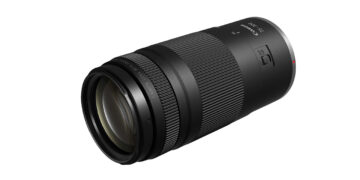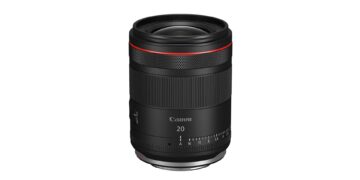
RF5.2mm F2.8 L DUAL FISHEYEとEOS R5 C
- An editorial department that knows nothing about VR production
- What is VR (Virtual Reality)?
- What is the application range of 180°VR?
- 180° VR shooting with Canon products
- Precautions when shooting 3D 180° VR
- Questions about shooting in VR
- And what will we film?
An editorial department that knows nothing about VR production
This initiative is all about VR beginners to VR video production. The PRONEWS editorial department collects data and writes articles on a daily basis to deliver news related to video production.
This time, due to a VR interview with Canon, the editorial department, who is new to VR, decided to work on VR video production.

Even if you have actually experienced VR video, when it comes to production, you don’t know right or left and get lost. This is a story in which young and veteran members of the editorial department unite and work on VR video production. First, let’s ask our seniors. We interviewed Mr. Ayumu Yajima of Canon Marketing Japan Co., Ltd. about VR in general and VR shooting using Canon products.
Challenge 180° VR! Basics
What is VR (Virtual Reality)?

Mr. Yajima:
In recent years, the term XR (Extended Reality) has been used, including VR (Virtual Reality), AR (Augmented Reality), and MR (Mixed Reality). VR is virtual reality, that is, “you can have a completely different experience regardless of where you are”.
Many people think of CG and games when they hear VR, but those are the types that you can participate in events yourself. In the case of live-action VR, it is characterized by being able to feel the reality as if you were actually there instead of not being able to participate.

Learn about 180° VR born from 360° VR
Mr. Yajima:
As a standard, 180°VR is a new format that was born after 360°VR. Conventional 360° VR naturally captures 360°, so there was a hurdle in shooting that the photographer had to evacuate after starting REC so that the photographer would not be captured.
In addition, high-quality 360-degree video is shot with multiple cameras, so it tends to be extremely difficult to produce due to the shooting equipment, data capacity, editing equipment specifications, etc.
On the other hand, 180° VR only shows 180° in front, so you can work behind the camera. Conventional shooting styles can be applied, and by narrowing the shooting range, there is also the advantage of being able to use less equipment.
Also, when viewing 360°VR, even if you can see all directions, you may get confused about where to look, and as a result, you tend to look more in front. With that in mind, I think it’s a feature of 180° VR that you can shoot and edit more easily by shooting only the front side.
What is the application range of 180°VR?
Mr. Yajima:
In terms of the use of 180° VR, which makes VR shooting relatively easy, I think video creators will be the main players. People who provide entertainment content such as live performances and events.
In addition, tourism, education, and education are starting to be used not only in schools, but also in training fields such as employee education.
Furthermore, I think that it may be a good way to record cultural properties that cannot be opened to the public due to their state of preservation.
And as one of our future developments, we would like to propose a more personal way of using it, such as those who want to keep records of their children more realistically for people who are interested in photography and video.
180° VR shooting with Canon products

Mr. Yajima:
If you use this equipment, you can handle relatively complicated VR shooting at an affordable price, so I will introduce it.
It will be a combination of Canon’s VR lens, RF5.2mm F2.8 L DUAL FISHEYE, and EOS R5 or R5 C.
The RF5.2mm F2.8 L DUAL FISHEYE is equipped with a stereo fisheye lens that enables 3D 180° VR shooting simply by attaching it to the EOS R5/R5 C.

Mr. Yajima:
In the past, shooting for 3D 180° VR used parallax, so two cameras were required. Then, various tasks such as setting and position adjustment for the two cameras, exposure adjustment, video synchronization setting, etc. were necessary, but with this combination, one camera is enough, so exposure adjustment etc. Since the image data is also from a single sensor, there is no need to combine them later.
And because we use the optical technology that we have cultivated in the 8K sensor and L lens, we can obtain high image quality that has not been seen before in the VR industry.
In addition, this lens is relatively resistant to backlighting, and VR shooting outdoors in fine weather, which was previously said to be difficult, can be done with this lens, so I think that is also an advantage.
Post-production workflow after shooting

Mr. Yajima:
When shooting, the image comes out in a state in which two all-round fisheye images are lined up in one movie file. By using software called EOS VR Utility, this is converted into a state that can be viewed in 3D using parallax as if two planes were lined up.
In the past, it was necessary to superimpose the images so that the parallax would appear properly on the software that supports VR, but the software does it all automatically, so there is no need for troublesome work at all. The biggest feature of this software is that it reads, converts, and ends.
After that, you can use editing software such as Adobe Premiere Pro or DaVinci Resolve to color grade the footage and give it a sense of the work. It is also possible to watch
In addition, although it is only for Premiere Pro, a plug-in is also available, and by applying the plug-in, you can read it into Premiere Pro from the beginning and edit it.
Precautions when shooting 3D 180° VR
Mr. Yajima:
One thing I would like you to pay particular attention to when shooting is that the camera shake correction is disabled. The EOS R5 C does not have in-body image stabilization, but when the R5 is equipped with this VR lens, the firmware detects it and turns off the image stabilization. Please note that it is currently difficult to correct camera shake with a single sensor for images coming in from two lenses, so the specifications are such that camera shake correction is turned off by controlling on the firmware side. I would like.
Also, since this lens is quite wide-angle, dust on the lens may be noticeable. I think that it is good to keep in mind maintenance such as cleaning with a blower before shooting.
In fact, the actual angle of view is 190°. For that reason, if it is just a little lower from the side, it will be reflected, so I would like you to be careful about that when shooting.

Questions about shooting in VR
After a lecture on basic knowledge about VR and how to use it, the question that pops up in the head of the editorial staff. We also asked Mr. Yajima a question. It is unknown at this point how to use it more than the function.
Editorial department:
What about audio, i.e. recording?
Mr. Yajima:
As for recording, you can use a sound collecting microphone that is used for normal video shooting, but by using a stereophonic sound collecting microphone, it is possible to record sound linked to the video at live events. Sound is an important factor in increasing the sense of immersion. I think it’s good as an appeal for VR video.
Editorial department:
Auto focus or manual focus?
Mr. Yajima:
It will be manual focus. Autofocus is the mainstream in our products, but only manual focus is available for this VR lens.
Editorial department:
Can you check the focus peak?
Mr. Yajima:
There is a manual focus peaking function, so I think you can use it and check it while magnifying the display.

Editorial department:
Is it possible to shoot with a gimbal?
Mr. Yajima:
First of all, let’s talk about the origin of VR images. Even a slight shake in the image can cause a lot of discomfort.
Basically, VR images are based on the premise of shooting with a tripod.
We do not recommend using a stabilizer, as it often shakes a little and makes the image uncomfortable. I think it will be a shooting method to fix it with a tripod or move it slowly with a crane or dolly.
Editorial department:
Is it possible to shoot at night?
Mr. Yajima:
I think I’ve become pretty good at shooting at night. Simply because the sensor size is large and the lens is bright, it is possible to shoot much brighter than other companies.
And what will we film?

The editorial department acquired the RF5.2mm F2.8 L DUAL FISHEYE and EOS R5 C, which are the fastest way to achieve 180° VR, and immediately started working on VR shooting. What do you shoot first? Discussed with the editors.
How about cutting out the usual situation as a result of the discussion? That seems to calm down my opinion. As Mr. Yajima said, the effective shooting target in 180° VR is to cut out the scene. In that sense, isn’t it better for the PRONEWS editorial department to cut out the “coverage scene” as it is? Opinions gathered. I decided to start shooting immediately. I’d like to show you how it looks in the next chapter.
WRITER PROFILE
Representative Director of PST Co., Ltd. Since 1994 he has been demonstrating and training in video software for Avid, Apple and Adobe.














